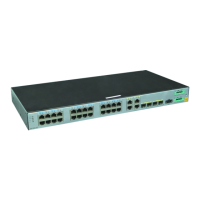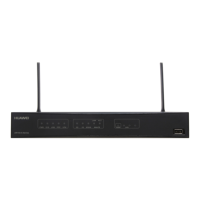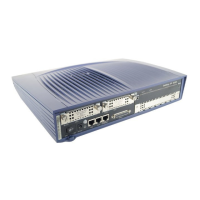The automatic broadcast timing process is as follows:
– Step1: The AR500 (Router in Figure 1-6) determines whether to broadcast the time to
connected meters according to the automatic broadcast timing configuration.
– Step2: After broadcast timing is triggered, the AR500 delivers a broadcast timing packet
to all meter channels.
– Step3: After meters receive the broadcast timing packet, they adjust their time according
to the time in the packet. The AR500 does not confirm whether the meter time is
synchronized because the broadcast timing packet does not need to be acknowledged.
Terminal Maintenance
l Automatic maintenance
The AR500 provides self-check and self-recovery functions and monitors hardware and
software running status in real time. If the hardware or software running status is abnormal,
the AR500 attempts to recover. If the AR500 fails to recover, the alarm indicator is on,
indicating that the system is not working properly.
l Manual maintenance
– You can use commands to configure the AR500, query the AR500 configuration, and
trigger real-time meter reading and self-check.
– You can use a USB flash drive to locally upgrade the AR500, and import and export
the AR500 configuration.
l User management
The AR500 defines three types of users, which are listed in ascending order of priority:
– Monitoring-level user
Uses only query commands.
– Configuration-level user
Uses configuration and operation commands.
– Management-level user
Manages other users.
1.1.6 Applications
AR500 as a Data Concentrator
As shown in Figure 1-7, RouterA can connect to single-phase and three-phase meters. They can
collect data from meters to implement automatic meter reading, and send collected meter data
to front end processors through FE/SFP (Ethernet cables in Figure 1-7) to implement smart grid.
Huawei AR500 Industrial Switch Routers
Feature Description - AMI 1 Feature Description - AMI
Issue 01 (2013-5-10) Huawei Proprietary and Confidential
Copyright © Huawei Technologies Co., Ltd.
13

